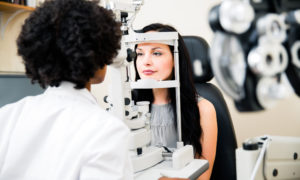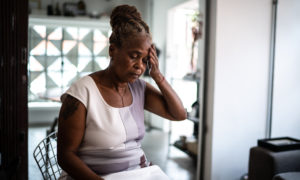Nov. 28, 2018

The formerly war-torn, up-and-coming nation of Rwanda may have valuable lessons to impart to China about its myopia crisis, according to reporting by Agnes Binagwaho, MD, for CNN.
There are now an estimated 720 million Chinese citizens with uncorrected poor vision, according to Dr. Xun Xu at the Shanghai Eye Hospital. Short-sightedness increases dramatically with age; it affects over half of children aged 10, 80 percent of 16-year-olds and over 90 percent of university students in China. “But the Chinese government has the resolve — and a five-year plan — to eradicate poor vision and preventable blindness by delivering ‘universal medical eye care for all,'” Dr. Binagwaho writes.
Dr. Binagwaho may know a thing or two about meeting eyecare needs. As a minister for health in Rwanda, she worked with a team of colleagues to execute a plan that provided all 12 million citizens with the option of accessing glasses, which cost as little as $1.50, and are provided free for the poorest 20 percent.
“The key strategy was training nurses at regular health centers to deliver sight tests and prescribe glasses. In Rwanda, between 2012 and 2017, a three-day course trained about 2,800 nurses to perform eye exams nationwide and provide appropriate eyecare, meeting a critical shortage of trained specialists to diagnose eye conditions,” Dr. Binagwaho explains.
China can learn from Rwanda’s example in not only providing the impoverished with access to eyecare, including myopia control measures, but in addressing the gap between the needs of those in rural and urban areas.
“As in China, consistency of health care between rural and urban parts of Rwanda was an issue. To address this, the government set up 502 health centers with good access to all 15,000 villages across Rwanda. In each health center, four general nurses were up-skilled to provide basic vision testing and eyecare, alongside their other duties,” writes Dr. Binagwaho. “China faces a significant discrepancy between eyecare in the urban areas, where most ophthalmologists practice, and the rural regions where approximately 42 percent of the population lives; people there often live 50 miles or farther from the nearest town or city.”
The Chinese President Xi Jinping has launched an initiative to address the myopia crisis, focusing on isolating, and curbing, possible contributors to myopia, such as heavy digital screen use, but Dr. Binagwaho says the first step to this challenge is taking a cue from Rwanda, and simply providing basic eyecare and eyewear to those in need.
“While all potential causes of myopia should be examined and prevention is important, the challenge for China at this juncture is to get eye testing and affordable glasses to all those who need them,” Dr. Binagwaho writes. “The country’s commitment to this eyecare revolution will translate into benefits well beyond the health sector and will help to promote literacy, education, the economic empowerment of families and the country as a whole.”



























